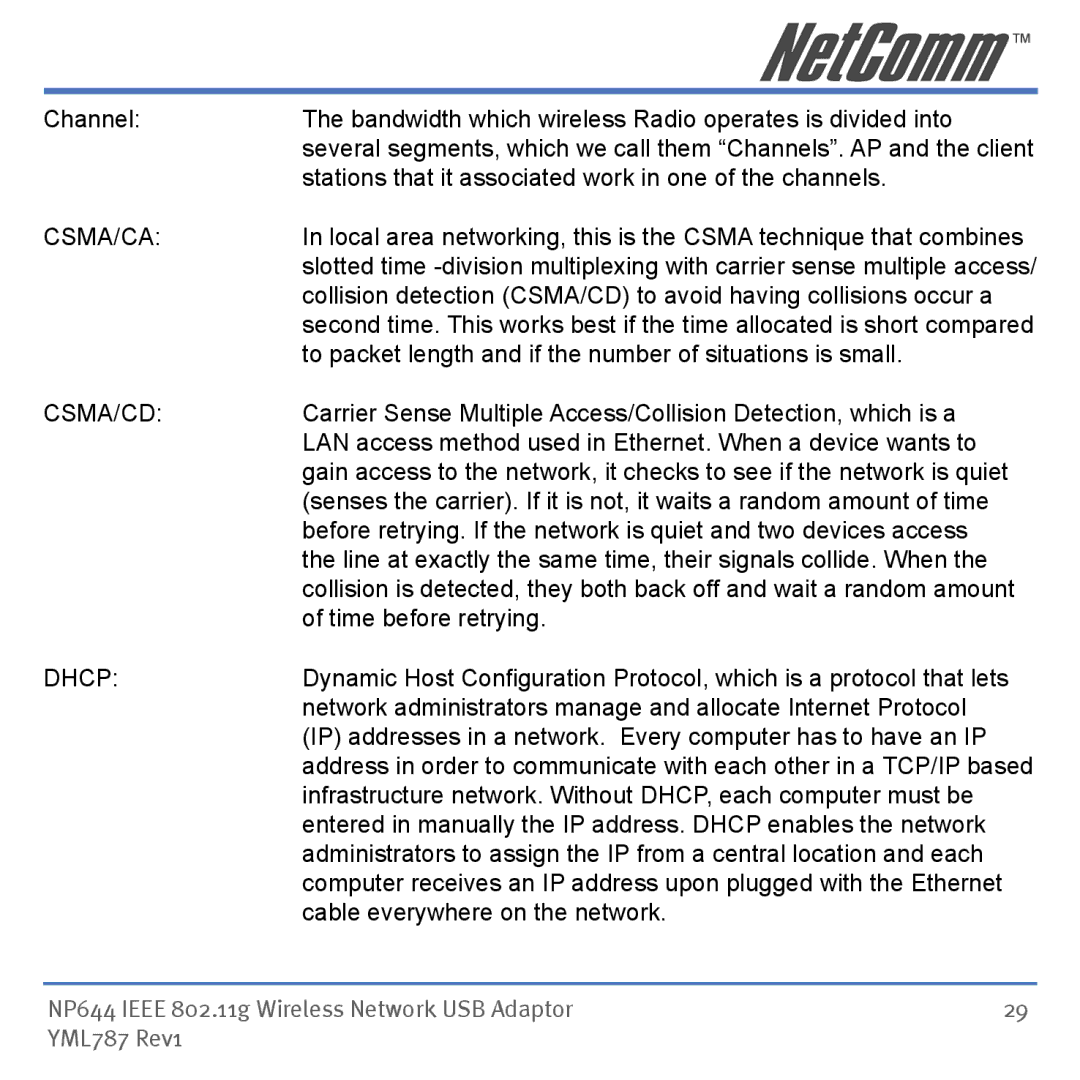Channel: | The bandwidth which wireless Radio operates is divided into |
|
| several segments, which we call them “Channels”. AP and the client | |
| stations that it associated work in one of the channels. |
|
CSMA/CA: | In local area networking, this is the CSMA technique that combines | |
| slotted time | |
| collision detection (CSMA/CD) to avoid having collisions occur a |
|
| second time. This works best if the time allocated is short compared | |
| to packet length and if the number of situations is small. |
|
CSMA/CD: | Carrier Sense Multiple Access/Collision Detection, which is a |
|
| LAN access method used in Ethernet. When a device wants to |
|
| gain access to the network, it checks to see if the network is quiet | |
| (senses the carrier). If it is not, it waits a random amount of time |
|
| before retrying. If the network is quiet and two devices access |
|
| the line at exactly the same time, their signals collide. When the |
|
| collision is detected, they both back off and wait a random amount | |
| of time before retrying. |
|
DHCP: | Dynamic Host Configuration Protocol, which is a protocol that lets | |
| network administrators manage and allocate Internet Protocol |
|
| (IP) addresses in a network. Every computer has to have an IP |
|
| address in order to communicate with each other in a TCP/IP based | |
| infrastructure network. Without DHCP, each computer must be |
|
| entered in manually the IP address. DHCP enables the network |
|
| administrators to assign the IP from a central location and each |
|
| computer receives an IP address upon plugged with the Ethernet |
|
| cable everywhere on the network. |
|
|
| |
NP644 IEEE 802.11g Wireless Network USB Adaptor | 29 | |
YML787 Rev1 |
|
|
